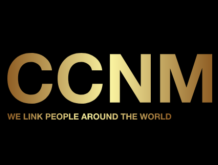Reprint from the New York Times
https://www.newtimes.co.rw/section/read/97602
Kanye_frank@yahoo.co.uk
The Rastafarian movement started way back in Jamaica among working-class black people in the 1930s. It began in part as a social stand against whites and the middle-classes, whom the Rastafarians saw as oppressors. Among their grievances, the Rastafarians believed that by being taken to the Caribbean by slave traders they had been robbed of their African heritage, which they sought to recapture and celebrate.

The Rastafarian movement started way back in Jamaica among working-class black people in the 1930s. It began in part as a social stand against whites and the middle-classes, whom the Rastafarians saw as oppressors. Among their grievances, the Rastafarians believed that by being taken to the Caribbean by slave traders they had been robbed of their African heritage, which they sought to recapture and celebrate.
The Rastafarian movement takes the Bible as its sacred text but interprets it in an Afro-centric way in order to reverse what Rastas see as changes made to the text by white powers. The movement took as its spiritual head Haile Selassie I, former Emperor of Ethiopia, who was lauded for being a black leader in the heart of Africa. To them, he became Jah, who would one day lead the people of African origin to the Promised Land.
Like any spirituality, Rastas have their own beliefs, symbols, and traditions but there is no formal Rastafarian creed and there are slight differences in the views of different groups. They believe that Haile Selassie is the Living God; the Black person is the reincarnation of ancient Israel, who, at the hand of the White person, has been in exile in Jamaica. Rastafarians consider “Jamaica as hell; Ethiopia is heaven, the Invincible Emperor of Ethiopia is now arranging for expatriated persons of African origin to return to Ethiopia and in the near future Blacks shall rule the world.” They believe that God is found within every man by emphasizing that he reveals himself to his followers through his humanity.
According to Tuff Gong Isimbi, (28) one of the Rastafarians in Kigali, salvation for Rastafarians is an earthly idea, rather than heavenly. “Human nature is very important to us and we do whatever it takes to preserve and protect it,” Isimbi said. He mentioned that Rastafarians are the chosen people of God and are on earth to promote his power and peacefulness. Isimbi noted that the previous belief that white people are evil has diminished and is no longer central to the Rastafarian belief systems.
Rastafarian symbols
Dreadlocks
They have several meanings. First, they are a part of the biblical Nazarene vow, which prohibits shaving and combing the hair. But it is not the dreadlocks that make someone a rastaman, and some Rastas’ don’t wear dreadlocks. The locks, because of their appearance, symbolize the roots of the man, and his spirituality, the link with Jah.
Ganja
It signifies the healing of the nations, also known as hemp, cannabis, or marijuana and, is used as a holy sacrament by Rastas in many ways. Rastas smoke herb to meditate, symbolizing the burning bush, and for its curative properties i.e. asthma. Herb can be eaten or infused.
Rasta flag
The Flag is composed of three colors, red, yellow, and green. The red symbolizes the blood of black people, the yellow the stolen gold, and the green the lost lands of Africa. The Rasta flag can also be seen during the Coptic celebration in Ethiopia. These colors are also on the Senegalese flag, from where thousands of slaves were deported, transiting by the Goree Island.
Star of David
This symbolizes the linkage between Haile Selassie and David the King of Israel and also the Rasta consider themselves like the Israelites in exile in Babylon. The Star of David is the symbol of Israel.
Conquering Lion and the Lamb
They both symbolize Haile Selassie according to the Revelations and the opening of the seven seals. They are two faces of the same reality, the Alpha and Omega. Haile Selassie’s death in 1975 was described by his followers as his ‘disappearance’, since they refused to believe he passed away. Although some Rastafarians still regard him as the black messiah, many modern adherents do not see this as central to their faith.
Currently, it is believed there are more than one million Rastafarians around the world. Some live in communes, which double as temples, where the Bible is studied and prayers are offered.
